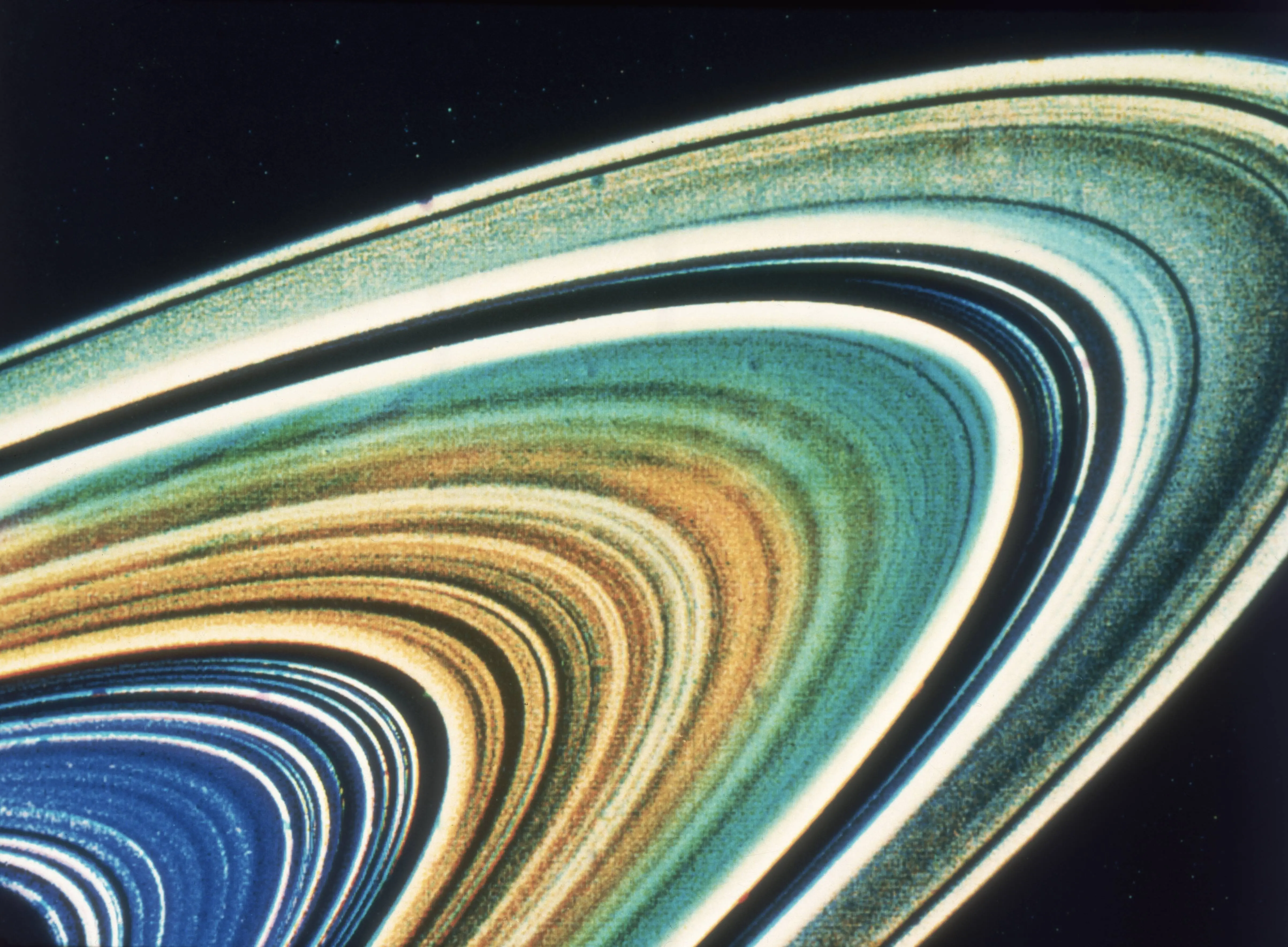Saturn and the Moon align closely in the night sky as November begins
-
 An enhanced colour image of Saturn's rings, as seen by the Voyager 2 spacecraft, August 1981 (Image via Getty)
An enhanced colour image of Saturn's rings, as seen by the Voyager 2 spacecraft, August 1981 (Image via Getty)At the beginning of November 2025, the Moon and Saturn will be visually very close from the perspective of the Earth, the two bodies making an alignment that will be easily observed by the naked eye.
It is a lunar phase that the Moon will be in, coming to its fullest, called the Beaver Moon. In addition, it will also be a supermoon, the second of the three for the year, as per the information provided by the BBC.
In fact, Saturn is just past its opposition now. So, the planet rises as the Sun sets and can be seen all night long.
People can find the planet close to the Moon with their naked eyes. However, if they use some optical instruments, they can also see the moons of Saturn and other details.
Saturn and the Moon's close approach marks early November skies
Observing Saturn in early November
Saturn can be seen in the southeast sky right after the sun has set, and as the night goes on, it gets higher and higher in the sky until it is in the south around 9 p.m.
At midnight, it will be going to the southwest setting and will not be visible before the sun rises. An opposition is the case when from Earth a planet is located in the direction opposite to the Sun, hence it is lit fully, and can be seen for longer hours.
Even though the rings of Saturn are directed edge-on and look thin from our planet, maybe you can see the biggest moon of the planet, Titan, with the help of a pair of binoculars or a telescope.
People who wish to see the stars can take advantage of apps that help them find Saturn and see its location in relation to the Moon.
Tracking the Moon’s movement
The Moon keeps moving to the east in the sky night after night, so it passes planets and bright stars one after another over the evenings.
On November 1, Saturn and the Moon look to be the closest in the southeastern sky at around 6 p.m. They are still visible as they move toward the south.
At 9 p.m., the Moon is a bit lower than Saturn, and both are setting around 2 a.m. if you have a clear view of the western horizon.
On November 2, the Moon is to the left of Saturn in the same southeastern area after sunset. By morning, Saturn sets before the Moon.
On November 3, the Moon is going further from Saturn as it is getting ready for the full Beaver Moon on November 4 or 5.
Observers may notice the Moon appearing larger or brighter near the horizon due to the Moon illusion, unrelated to the supermoon itself.
Additional objects in the night sky
Besides, there are quite a few other celestial bodies that one can spot with the naked eye. Around 8 in the evening, the Pleiades and Hyades star clusters can be seen in the eastern sky with the Pleiades above the Hyades.
At about 10:30 p.m., the constellation Orion can be seen going up and thus allowing one to reach the Orion Nebula that is situated below Orion’s Belt.
In addition to that, bright planet Jupiter can be seen in the eastern sky forming a triangle with the Gemini stars Castor and Pollux.
The Summer Triangle, made up of the stars Deneb, Vega, and Altair, is very clear in the southwestern sky at around 7 p.m. Those equipped with telescopes may find deep-sky objects in this asterism.
The Great Square of Pegasus can be seen from the southeast at 7 p.m. or so. It goes higher in the sky until midnight and then starts its journey down toward the western horizon.
According to the BBC, this pattern can be used to find the Andromeda Galaxy, M31.
Through the first days of November, one can follow the movement of the Moon and Saturn by looking at them locally and noting their relative positions to other celestial bodies.
The time is good both for a series of observations one can make with the naked eye and for the use of binoculars or a telescope to see features such as Saturn’s moons and the Orion Nebula.
Stay tuned for more updates.
TOPICS: Saturn and Moon alignment, Andromeda Galaxy viewing, Beaver Moon 2025, Great Square of Pegasus, Moon near Saturn, November 2025 night sky, Pleiades and Hyades star clusters, Saturn visible tonight, Supermoon November 2025